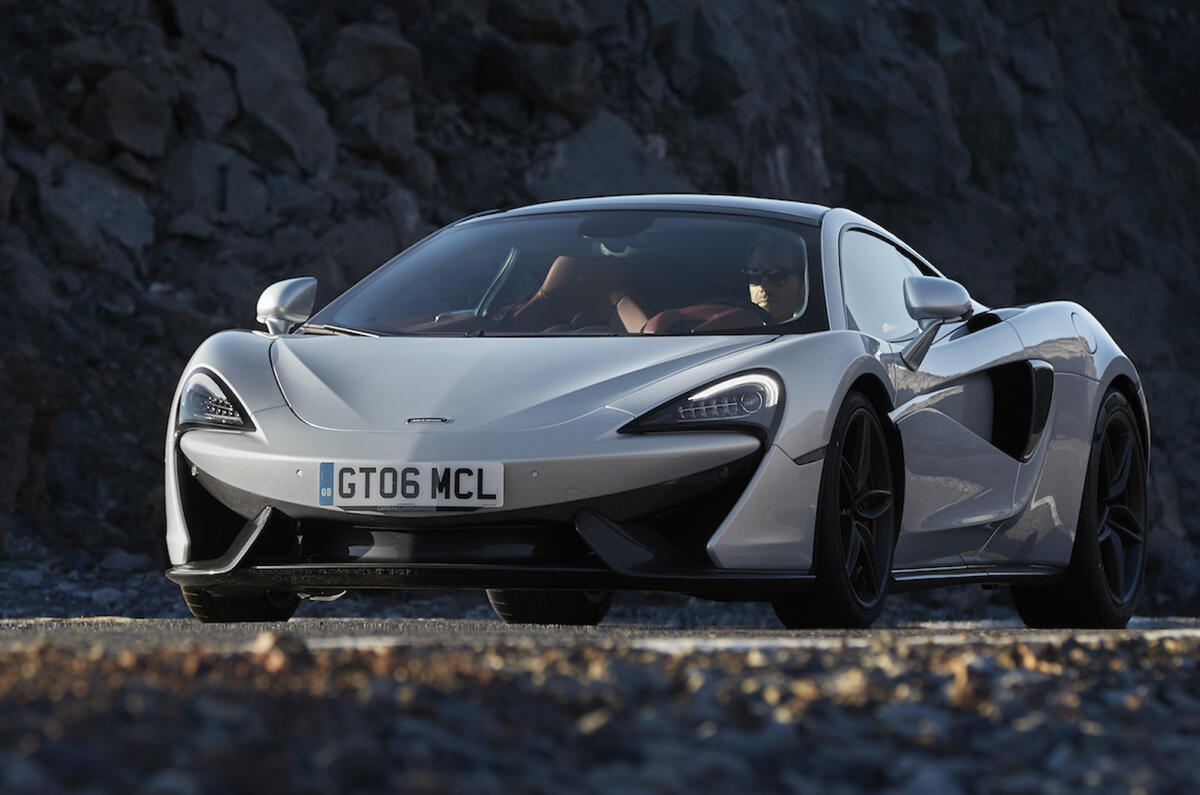What is it?
McLaren Automotive will chalk up three profitable years out of a six-year car-making career in 2016 and is apparently in the mood to branch out. Because, besides supercars, hypercars, racing cars, track specials and limited-edition automotive collectors’ pieces, it now also makes grand tourers. Enter the new £154,000 570GT - the McLaren in which to cross continents.
There are grand tourers and grand tourers, of course. Being part of the British car maker's entry-level ‘Sports Series’ family of models and having a mid-mounted engine, a carbonfibre tub and room for two occupants only, the 570GT is evidently a junior supercar with a grand touring bent – and emphatically not the other way around. It’s ostensibly a slightly prettier, richer, more practical, comfortable and refined take on the 570S, a car whose lightness, big-hitting performance and effortless handling dynamism it shares in almost equal quantities.
Inside the engine bay is the same twin-turbo 3.8-litre V8 as the one that powers McLaren’s entire production range in one slightly altered form or another, making 562bhp and 443lb ft of torque in this case - exactly what the 570S comes armed with. Driving the rear wheels through a seven-speed dual-clutch automatic gearbox, that’s enough to put the GT within a couple of tenths of a second of the 570S in acceleration to both 62mph and 124mph – the GT weighing less than 40kg more than its sister car if you option it up just so.
Accounting for that extra weight is a slightly more lavishly appointed cabin than that of the 570S, with some additional items of standard equipment thrown in. Those items include a standard tinted panoramic glass roof, a completely configured rear deck with a side-hinged ‘piano lid’ glass access panel and a leather-trimmed loading area underneath it that adds 220 litres of carrying capacity to the 130 litres you’ll find in the usual place for a McLaren: under the bonnet.
What separates the 570GT from a 570S mechanically can be summed up as a collection of small tweaks to the suspension, steering, running gear and powertrain intended to combine for a greater effect on the character of the car than you might anticipate. Spring rates drop by 15% on the front axle and 10% out back. The car’s adaptive dampers have been retuned for a more comfort-oriented compromise.
The steering rack is 10% less direct and therefore a touch lighter at the rim. Pirelli P Zero tyres with noise-cancelling foam in their construction are fitted in place of the 570S’s standard P Zero Corsas. You also get iron brakes as standard, whereas the 570S gives you carbon-ceramic discs, and it has the quieter exhaust from the 540C for less motorway drone.













































Join the debate
Add your comment
The rear end definitely looks
Nicer roofline too...
Simply fabulous